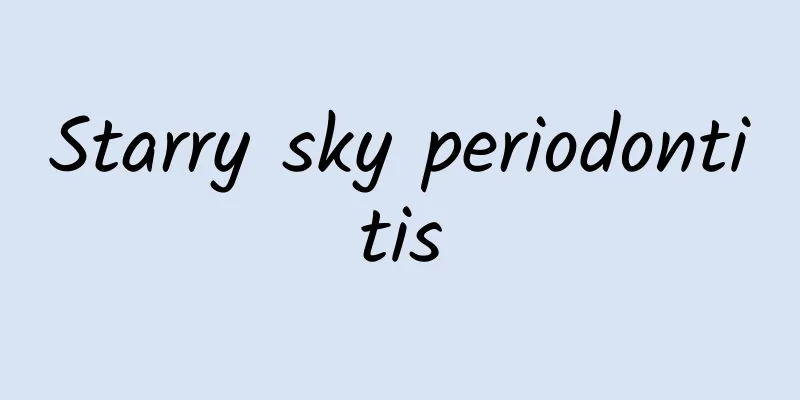When is the best time to do B-ultrasound for polycystic ovary syndrome?

|
After polycystic ovary syndrome occurs, an ultrasound examination should be performed. Not only that, patients also need to undergo a laparoscopy. These examination items can determine the real cause of this condition. Generally, after it occurs, patients will have a series of adverse reactions. The most common one is irregular menstruation or anovulation, which should be treated based on the examination results. (1) Basal body temperature measurement (2) Ultrasound examination (3) Diagnostic curettage (4) Laparoscopy Hormone measurement The full name of PCOS is polycystic ovary syndrome, which has menstrual disorders (oligomenorrhea or amenorrhea), anovulation, hirsutism, obesity, infertility, etc. as the main clinical manifestations. It is characterized by bilateral enlargement of the ovaries showing polycystic changes. Its endocrine characteristics are excessive androgen, insulin resistance and hyperinsulinemia, increased LH/FSH ratio and persistent anovulation. It is one of the common causes of menstrual disorders and infertility in women of childbearing age. 1. Promoting fertility For patients who want to have children, the purpose is to promote fertility: (1) Drug-induced ovulation treatment: Choose appropriate drugs to induce ovulation based on the patient's specific situation. Polycystic ovulation can easily lead to ovarian hyperstimulation syndrome, so patients must follow the doctor's advice when taking medication; (2) For PCOS patients who are not responsive to drug treatment and still cannot conceive normally, surgical treatment is required. Currently, the best surgical treatment option is minimally invasive ovarian wedge resection, followed by appropriate use of drugs to induce ovulation. Adjust the menstrual cycle and lower LH. For patients who do not desire to have children, the main purpose is to adjust and restore the menstrual cycle and prevent excessive proliferation of the endometrium or even cancer. (1) The pituitary gland is more sensitive to GnRH, which leads to excessive secretion of LH, which increases ovarian androgens and promotes follicular atresia. The dominant follicle cannot be formed, and the normal androgen secretion pattern is interrupted. Many small follicles still secrete estrogen. Excessive androgens are converted into estrogen in the periphery. Polycystic ovary syndrome presents with high androgen and high estrogen, with excessive androgen being dominant. (2) Insulin resistance leads to hyperinsulinemia, which stimulates the synthesis and secretion of androgens by theca cells, ovarian stroma, and adrenal cortex. As androgens increase, estrogen conversion increases. Positive feedback causes LH to increase further, while negative feedback reduces FSH secretion. High LH further increases androgens, continuing a vicious cycle of anovulation. Insulin and estrogen promote follicular development, while androgens promote follicular atresia, resulting in follicular development but maturation disorders, no dominant follicle formation, and anovulation. |
<<: What does it mean when a girl has a lot of hair down there?
>>: Girlfriend's chest scar pimple
Recommend
Is instant hot pot delicious? What is the heating principle of instant hot pot?
Hot pot mutton in copper pot is an authentic way ...
What medicine to use for dry and itchy vagina
The female genitals will secrete some liquid secr...
Can early cervical cancer be cured?
Cervical cancer is a common gynecological disease...
Escorting Love--Paying attention to seriously ill pregnant women and ensuring the safety of mothers and babies
Giving birth to a new life is the top priority fo...
Is it normal that my period only lasted two days?
For some women, their menstruation may only last ...
Which country is Phuket in? What are the specialties of Phuket?
Phuket is an island located in the Andaman Sea an...
What are the reasons for delayed menstruation at the age of seventeen?
Menstrual problems are an important factor affect...
How to use cleaning solution to clean the vulva?
As we all know, the structure of the female repro...
Why do I have stomach pain when my period is delayed?
Many women have problems with their menstruation,...
Attention! Don’t take hyperlipidemia, the “invisible killer”, lightly
After getting the physical examination report, wh...
Why should we protect the Lijiang Ancient Town? Which towns does the Lijiang Ancient Town refer to?
Lijiang has unique natural scenery, including sno...
What to do if you don't ovulate during your ovulation period
Women are the most important backbone of human re...
[Anti-epidemic Science Popularization] 9 small actions, do them once in the morning to improve your immunity and feel comfortable all day long!
Source: People's Daily WeChat comprehensive c...
How to treat postpartum bleeding?
Mothers need to take supplements before and after...
What are the dangers of a bra that is too tight?
Bras are underwear that women often wear. When it...









